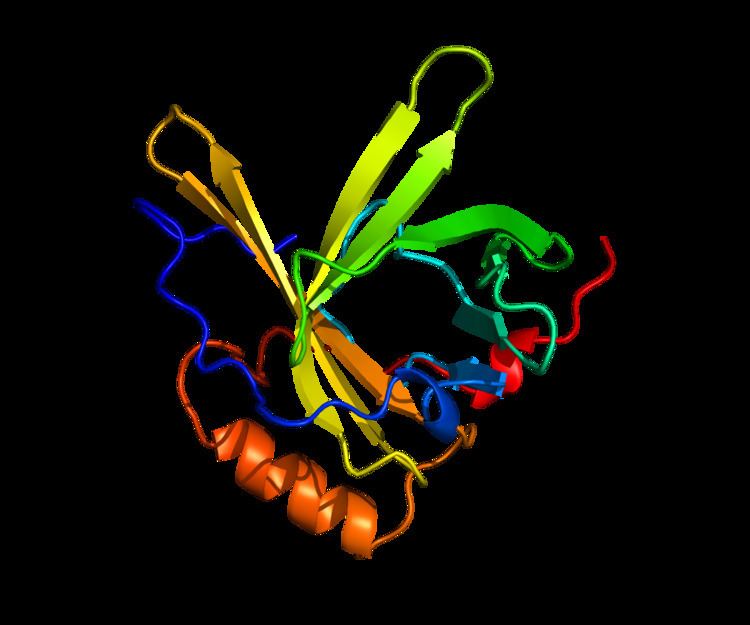Aliases APOD, Apod Ensembl ENSG00000189058 | Entrez 347 | |
 | ||
External IDs OMIM: 107740 MGI: 88056 HomoloGene: 1246 GeneCards: APOD | ||
Apolipoprotein D is a protein that in humans is encoded by the APOD gene. Unlike other lipoproteins, which are mainly produced in the liver, apolipoprotein D is mainly produced in the brain and testes.
Contents
Function
Apolipoprotein D (Apo-D) is a component of high-density lipoprotein that has no marked similarity to other apolipoprotein sequences. It has a high degree of homology to plasma retinol-binding protein and other members of the alpha 2 microglobulin protein superfamily of carrier proteins, also known as lipocalins. It is a glycoprotein of estimated molecular weight 33 KDa. Apo-D is closely associated with the enzyme lecithin:cholesterol acyltransferase - an enzyme involved in lipoprotein metabolism. ApoD has also been shown to be an important link in the transient interaction between HDL and LDL particles and between HDL particles and cells.
Clinical significance
APOD is a biomarker of androgen insensitivity syndrome (AIS). APOD is an androgen up-regulated gene in normal scrotal fibroblast cells in comparison to CAIS labia majora cells.
APOD is associated with neurological disorders and nerve injury, especially related to myelin sheath. APOD was shown to be elevated in a rat model of stroke. APOD is elevated in patients with schizophrenia, bipolar disorder, and Alzheimer's disease.
